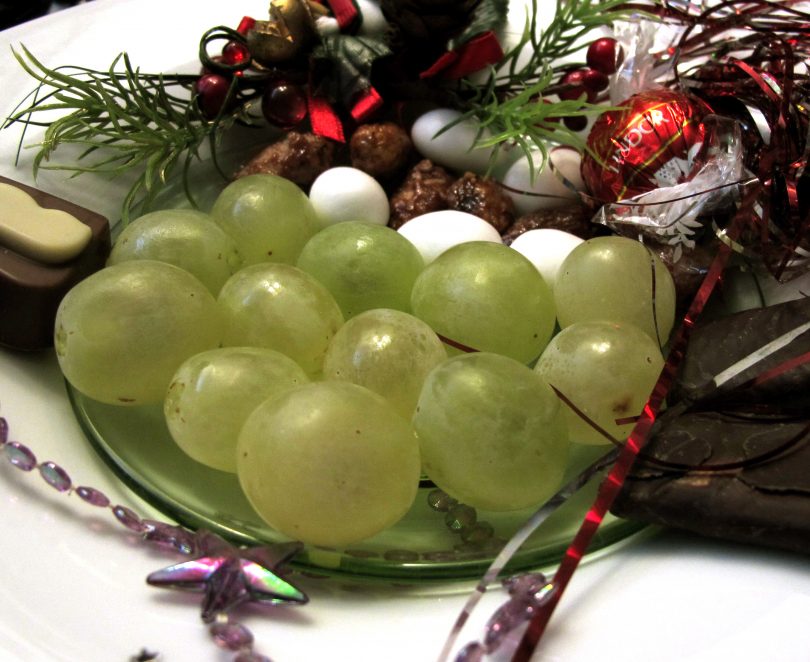Every country has its way of celebrating the New Year and Spain is no exception. Madrid, in particular, has a very curious tradition known popularly as Las doce uvas de la suerte, or the twelve grapes of luck.
 On New Year’s Eve hoards of people go out into the streets to celebrate together, waiting for the clock to strike midnight. They use colorful wigs, put on masks or even full costumes, and bring hands full of confetti. The most popular area for this ceremony is Puerta del Sol, a plaza in the center of the city that provides an excellent view of the large clock at Real Casa de Correos. When the clock pointer finally reaches 12, people eat twelve grapes (one grape per month), which supposedly brings them luck for the following year, and toast with cava, the Spanish version of Champagne.
On New Year’s Eve hoards of people go out into the streets to celebrate together, waiting for the clock to strike midnight. They use colorful wigs, put on masks or even full costumes, and bring hands full of confetti. The most popular area for this ceremony is Puerta del Sol, a plaza in the center of the city that provides an excellent view of the large clock at Real Casa de Correos. When the clock pointer finally reaches 12, people eat twelve grapes (one grape per month), which supposedly brings them luck for the following year, and toast with cava, the Spanish version of Champagne.
There is more than one store about how this tradition came to be. Some say it started in the end of the 1800s, when there was a surplus of grape production. Some say the tradition was created by vine growers from Alicante, another region in Spain, who simply wanted to make more money. A third version of the story says that upper-class families had the habit of eating grapes and drinking champagne to celebrate the New Year, and that a group of working class Madrilians decided to join at Puerta del Sol square to do the same, as a way to mock the rich.
Regardless of what the origin of Las doce uvas de la suerte tradition is, it is now part of Madrid’s culture. Even those people who cannot go to Puerta del Sol to celebrate, or who simply want to avoid the chaos, turn on their televisions and watch the ceremony live, so they can eat their grapes and toast with cava.
A Spanish tradition
 This Spanish tradition was adopted by places with a broad cultural relation with Spain, countries in Latin America, Hispanic communities in the U.S.A. and the Philippines, which adopted the tradition when they were still part of the Spanish Empire.
This Spanish tradition was adopted by places with a broad cultural relation with Spain, countries in Latin America, Hispanic communities in the U.S.A. and the Philippines, which adopted the tradition when they were still part of the Spanish Empire.
After the celebration at Puerta del Sol square, people (mainly the young ones) go to other locations to continue partying. Some go to bars and other go to nightclubs, where they remain celebrating until the late hours of the morning.






